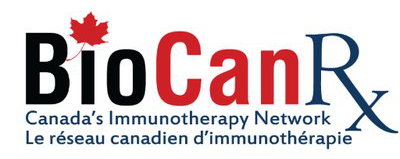By Heather Blumenthal

Emily Thompson, Grace Fox, Madison Foster
It seems obvious – blindingly so – that patients, traditionally the subjects of clinical trials, should be involved as partners from the beginning. The benefits for patients are clear – an increased sense of control and the ability to learn about the research process from the inside among them. As the saying goes, nothing about me, without me.
But the surprise comes in realizing how much the research itself benefits from the input of patients, who have a unique perspective, based on their lived experiences.
The other surprise? Despite widespread awareness of both the importance and benefits of integrating patients as partners early in the clinical trial process, there is little known about how best to do so, no consensus on what works and what doesn’t.
BioCanRx is seeking to provide a roadmap for patient involvement in early-stage clinical trials through its project entitled Making Patient Partnerships a Reality in Very Early Clinical Trials: Development of a Patient Engagement Platform. Known as MARVEL, the project will help to advance the field of patient engagement, with the hope of inspiring other researchers in the cancer biotherapeutics community and beyond to engage patients.
Under the direction of PIs Drs. Manoj Lalu, Dean Fergusson and Justin Presseau, three research associates are working with four BioCanRx-funded projects to better assess what does – and doesn‘t – work with patient engagement. Madison Foster, Grace Fox and Emily Thompson are enthusiastic about their work and about its potential to improve both the research and the patient experience.
The four projects, all of which are investigating using various immunotherapies to fight cancer, are:
- The CLIC-1901 trial for blood cancers, led by Dr. Natasha Kekre at the Ottawa Hospital Research Institute
- A preclinical project focused on preventing leukemia and neuroblastoma relapses, led by Dr. Michel Duval of CHU Sainte-Justine in Montreal
- A preclinical project focused on B-cell leukemia, led by Dr. Scott McComb of the University of Ottawa and National Research Council and Dr. Risini Weeratna of the National Research Council
- A trial for metastatic melanoma, led by Dr. Simon Turcotte at CHUM in Montreal (together with Dr. Antoine Boivin, patient engagement lead at CHUM).
In all cases, patient partners have been (or will be) recruited and are sitting at the table alongside the researchers responsible for the projects, offering input and raising questions based on their experience and knowledge of what patients need.
Without patient participation, says Thompson, who holds a master’s degree in epidemiology, “you’re going in blind. But patients tell us, ‘this is what’s important to us.’”
And, she adds, researchers tend to be quantitative – they focus on the numbers. Patients, though, talk about feeling comfortable, respected, engaged – concepts that are vitally important for those considering participating in a clinical trial.
“You get into this frame of mind and you bring it to someone else and they give your thoughts so much depth and perspective,” she says.
Much of the input from patient partners has come around mechanisms for informed consent. Thanks to this input, informed consent documents have become easier to understand. The patient partners also spearheaded the development of a visual aid to accompany the informed consent documents that both makes the informed consent easier to understand and provides something trial participants can share with friends and family to explain what they are taking part in and why.
While this is an obvious area where patient partners can improve the clinical trial experience for participants, engaging patients in designing a clinical trial can also have an impact on the questions the trial asks, its protocols, how it determines eligibility criteria and the outcomes it looks for, based on what matters to actual patients, not just to researchers. And, ultimately, patient engagement in clinical trials will help other patients decide to participate, knowing that they are not merely subjects, but that there are patients like them at the table, advocating for them.
The benefit that extends beyond any single trial, though, lies in the knowledge that will be gained – and disseminated – about how best to engage patients in early-stage clinical trial design, something that has been sorely lacking up till now. Foster, who holds a master’s degree in epidemiology, calls it a classic case of “compare and contrast.”
Dissemination through publications addressing frameworks and processes, evaluations and comparisons across the four projects will help to spread the word about how to successfully integrate patients into the clinical trial process.
Among the lessons that will likely emerge from an evaluation of the four projects’ approach to patient engagement is the importance of clear and ongoing communication, as well as the value of the perspectives that patients bring.
“Patients are able to pick up on things we might never have thought of,” says Foster, citing as an example the inclusion of patient and caregiver costs for travel and lodging in order to participate in a trial, in an early assessment of the economic feasibility of a trial.
Thompson became involved with MARVEL through sheer luck, putting her application in on the very last day. Today, she’s thanking her lucky stars.
“I find it really wonderful,” she says. “It’s very different from what I’ve done in the past.”
For her part, Fox, who was not planning on graduate school, has started a master’s program in epidemiology at the University of Ottawa, writing her thesis on patient engagement.
“One little taste of patient engagement kind of derailed my plans,” she jokes. Patient engagement “is now something I think about with everything,” she adds more seriously. “It’s not just icing on the cake. It’s central.”
Heather Blumenthal has been writing about health and health research for more than 20 years and never loses her fascination with the advances Canadian researchers are making.

